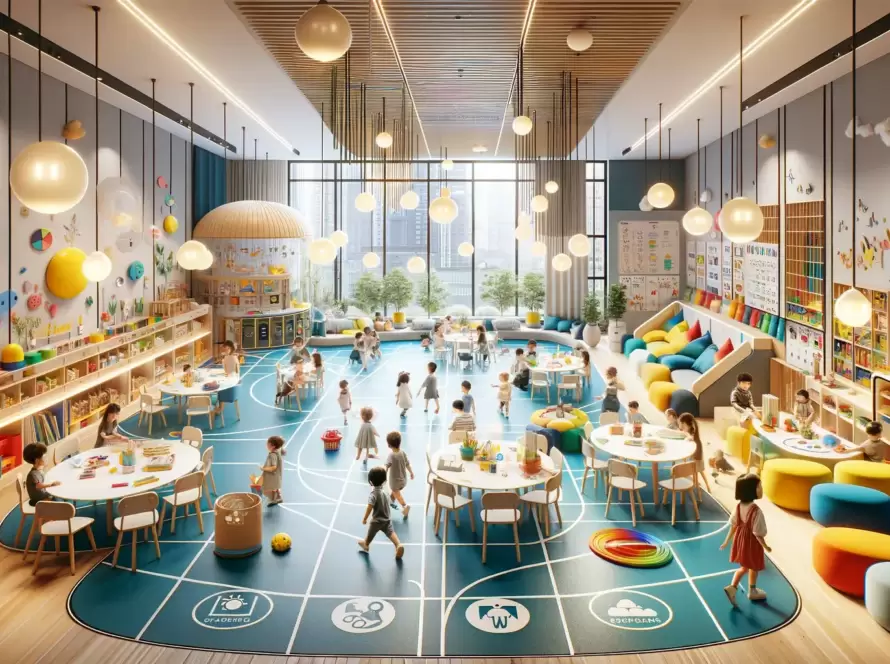
Table of Contents
- Introduction to Environmental Design
- Historical Evolution of Environmental Design
- Core Principles of Environmental Design
- Sustainable Architecture: Beyond Green Buildings
- Landscape Architecture: Designing with Nature
- Urban Planning: Creating Sustainable Cities
- Interior Design: Sustainability Inside Out
- The Role of Technology in Environmental Design
- The Economic Benefits of Environmental Design
- The Future of Environmental Design
- Conclusion: Embracing Environmental Design
Introduction to Environmental Design
Environmental design is a multifaceted field that encompasses a broad spectrum of disciplines. At its core, it integrates principles of architecture, landscape architecture, urban planning, and interior design to create spaces that are not only aesthetically pleasing but also environmentally sustainable. This holistic approach considers the interaction between the built environment and the natural world, aiming to minimize ecological footprints and promote sustainability.
Understanding environmental design requires a deep dive into its principles and applications. It’s about more than just green buildings or energy efficiency; it’s about creating harmony between human activity and the environment. This blog post will explore the various facets of environmental design, from its historical roots to its modern-day applications, and highlight the importance of this field in creating a sustainable future.
Historical Evolution of Environmental Design
The concept of environmental design has evolved significantly over the centuries. Ancient civilizations, such as the Greeks and Romans, incorporated principles of environmental design in their architecture. They used natural ventilation, solar orientation, and water management systems to create comfortable and sustainable living conditions.
During the Industrial Revolution, the focus shifted towards rapid urbanization and industrial growth, often at the expense of the environment. However, the environmental movement of the 1960s and 1970s brought a renewed interest in sustainable design. Pioneers like Ian McHarg and Buckminster Fuller emphasized the need for an ecological approach to design, laying the groundwork for modern environmental design practices.
Core Principles of Environmental Design
Environmental design is grounded in several core principles that guide its practice. Firstly, it prioritizes sustainability by using resources efficiently and minimizing waste. This involves the use of renewable energy sources, sustainable materials, and innovative technologies to reduce the environmental impact of buildings and infrastructure.
Another key principle is resilience. Environmental design aims to create structures that can withstand natural disasters and adapt to changing environmental conditions. This is particularly important in the face of climate change, as buildings and cities need to be resilient to extreme weather events and rising sea levels.
Sustainable Architecture: Beyond Green Buildings
Sustainable architecture is a critical component of environmental design. It goes beyond the concept of green buildings by integrating sustainability into every aspect of the design process. This includes site selection, building orientation, material choice, energy efficiency, and water conservation.
One notable example of sustainable architecture is the Bullitt Center in Seattle, often referred to as the greenest commercial building in the world. It features solar panels, rainwater harvesting, composting toilets, and an innovative energy system that allows it to operate independently of the grid. Such buildings exemplify how sustainable architecture can reduce environmental impact while providing a healthy and comfortable space for occupants.
Landscape Architecture: Designing with Nature
Landscape architecture plays a crucial role in environmental design by integrating natural elements into urban environments. This field focuses on creating outdoor spaces that are not only aesthetically pleasing but also environmentally beneficial. This includes the design of parks, gardens, green roofs, and urban plazas that enhance biodiversity and provide ecosystem services.
The High Line in New York City is a prime example of landscape architecture in action. This elevated park, built on a disused railway track, has transformed a neglected urban space into a vibrant green corridor. It provides a habitat for wildlife, mitigates urban heat island effects, and offers recreational space for residents and visitors.
Urban Planning: Creating Sustainable Cities
Urban planning is essential for developing sustainable cities that balance economic growth with environmental preservation. It involves strategic land use planning, transportation systems, and infrastructure development to create livable and resilient urban environments.
Copenhagen, Denmark, is often cited as a model of sustainable urban planning. The city’s comprehensive approach includes extensive cycling infrastructure, efficient public transportation, green buildings, and policies aimed at reducing carbon emissions. Copenhagen’s success demonstrates how thoughtful urban planning can create cities that are both environmentally sustainable and highly livable.
Interior Design: Sustainability Inside Out
Interior design is another critical aspect of environmental design. It focuses on creating indoor spaces that promote health, well-being, and sustainability. This involves selecting eco-friendly materials, optimizing natural light, and incorporating energy-efficient systems.
Biophilic design, which integrates natural elements into interior spaces, is gaining popularity for its benefits to human health and well-being. Studies have shown that exposure to nature can reduce stress, improve cognitive function, and enhance mood. Incorporating elements such as indoor plants, natural materials, and water features can create a more pleasant and sustainable indoor environment.


The Role of Technology in Environmental Design
Advancements in technology are driving innovation in environmental design. Smart buildings, for example, use sensors and automation systems to optimize energy use, improve indoor air quality, and enhance occupant comfort. These technologies allow for real-time monitoring and control, making buildings more efficient and sustainable.
Additionally, the use of Building Information Modeling (BIM) enables designers to create detailed digital models of buildings. This allows for better planning, analysis, and collaboration throughout the design and construction process. BIM can also simulate the environmental impact of different design choices, helping to create more sustainable buildings.
The Economic Benefits of Environmental Design
While the primary goal of environmental design is sustainability, it also offers significant economic benefits. Sustainable buildings typically have lower operating costs due to reduced energy and water consumption. They can also command higher rental and resale values, as there is increasing demand for eco-friendly properties.
Moreover, investing in environmental design can create job opportunities in various sectors, including construction, renewable energy, and green technologies. As the demand for sustainable solutions grows, so does the potential for economic growth and development.
The Future of Environmental Design
The future of environmental design looks promising, with increasing awareness and adoption of sustainable practices. Governments, businesses, and individuals are recognizing the importance of creating environments that are both functional and sustainable. Innovations in materials, technology, and design will continue to drive the field forward, making it possible to achieve greater levels of sustainability.
As we move towards a more sustainable future, environmental design will play a crucial role in addressing global challenges such as climate change, resource depletion, and urbanization. By embracing the principles of environmental design, we can create spaces that enhance our quality of life while protecting the planet for future generations.
Conclusion: Embracing Environmental Design
Environmental design is a vital field that encompasses various disciplines, all aimed at creating sustainable and resilient spaces. From architecture and landscape architecture to urban planning and interior design, each aspect plays a crucial role in promoting sustainability and enhancing quality of life.
As we continue to face environmental challenges, the importance of environmental design cannot be overstated. By understanding and applying its principles, we can create a built environment that is in harmony with the natural world, ensuring a sustainable and prosperous future for all.


